Finger-Count Interaction
Design and Evaluation of Finger-Count Interaction: Combining multitouch gestures and menus (IJHCS'12)
Selecting commands on multi-touch displays is still a challenging problem. While a number of gestural vocabularies have been proposed, these are generally restricted to one or two fingers or can be difficult to learn. We introduce Finger-Count gestures, a coherent set of multi-finger and two-handed gestures. Finger-Count gestures are simple, robust, expressive and fast to perform. In order to make these gestures self-revealing and easy to learn, we propose the Finger-Count menu, a menu technique and teaching method for implicitly learning Finger-Count gestures. We discuss the properties, advantages and limitations of Finger-Count interaction from the gesture and menu technique perspectives as well as its integration into three applications. We present alternative designs to increase the number of commands and to enable multi-user scenarios. Following a study which shows that Finger-Count is as easy to learn as radial menus, we report the results of an evaluation investigating which gestures are easier to learn and which finger chords people prefer. Finally, we present Finger-Count for in-the-air gestures. Thereby, the same gesture set can be used from a distance as well as when touching the surface.
| Finger-Count concept |  |
| Finger-Count menu | 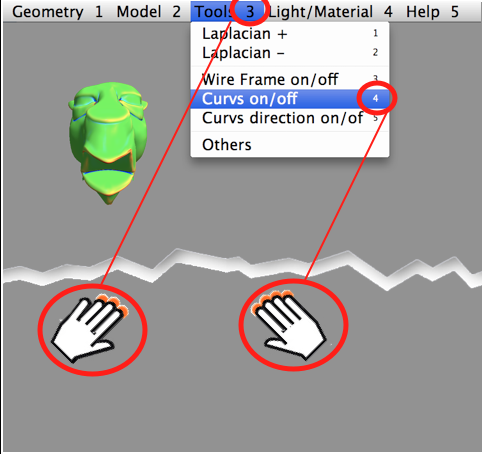 |
| Visual (left) and numerical (right) representations of the percentage of recall for each command during the first three training blocks | |
| Identity of fingers for Touch Finger-Count depending on the number of fingers in contact on the surface and the hand identity. Red lines indicate observed chording gestures | 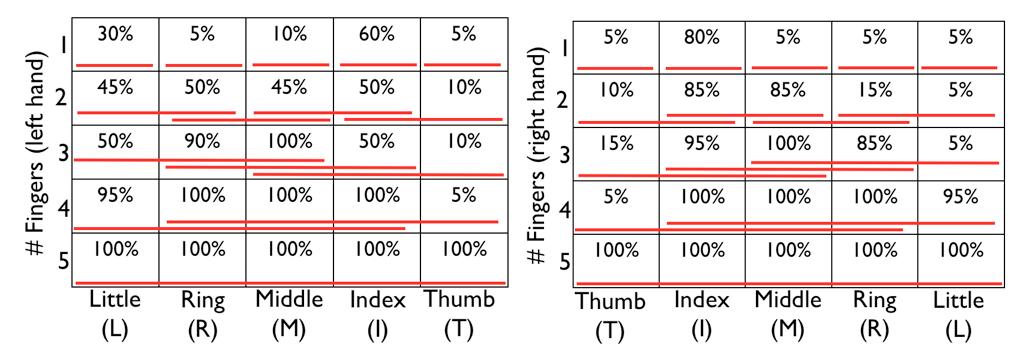 |
Finger-Count and Radial-Stroke Shortcuts: Two Techniques for Augmenting Linear Menus (CHI'10)
We propose Radial-Stroke and Finger-Count Shortcuts, two techniques aimed at augmenting the menubar on multi-touch surfaces. We designed these multi-finger two-handed interaction techniques in an attempt to overcome the limitations of direct pointing on interactive surfaces, while maintaining compatibility with traditional interaction techniques. While Radial-Stroke Shortcuts exploit the well-known advantages of Radial Strokes, Finger-Count Shortcuts exploit multi-touch by simply counting the number of fingers of each hand in contact with the surface.
We report the results of an experimental evaluation of our technique, focusing on expert-mode performance. Finger-Count Shortcuts outperformed Radial-Stroke Shortcuts in terms of both easiness of learning and performance speed.
We report the results of an experimental evaluation of our technique, focusing on expert-mode performance. Finger-Count Shortcuts outperformed Radial-Stroke Shortcuts in terms of both easiness of learning and performance speed.
| Performing 3D operations on a multi-touch surface | 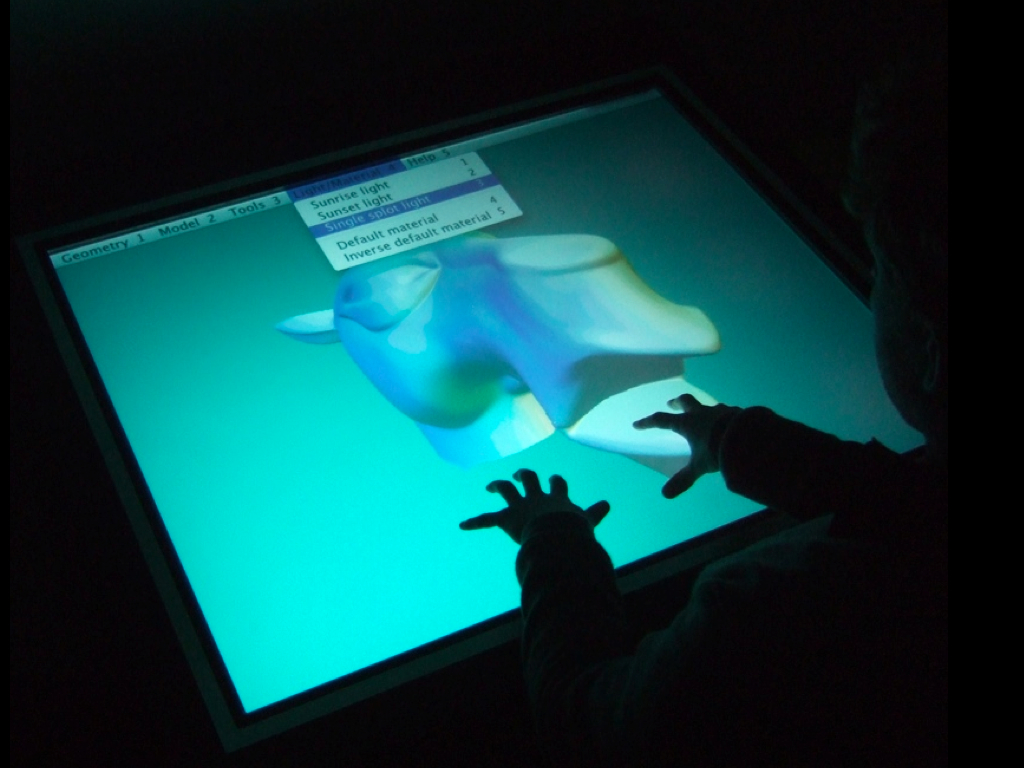 |
Augmenting Quantum-GIS For Collaborative And Interactive Tabletops (GIS'11)
This paper presents our QGIS-MT, an extension of Quantum GIS (QGIS) for interactive tabletops. First proposed is an interactive and collaborative environ-ment that allows several users to interact simultaneously on a multi-touch surface. This environment aims at favoring communication among users and at enhancing social awareness and the decision-making process. Next presented are the results of an interview with GIS users, which gives support to the proposed approach. In addition, presented here is a novel interaction technique, called Finger-Count Shortcuts that lets you navigate and activate numerous commands quickly and easily by performing simple finger gestures. Finally, there is a detailed discussion of how Quantum GIS was integrated into this environment and how our QGIS-MT plug-in providing multi-touch capabilities and Finger-Count Shortcuts were im-plemented in standard GIS menus.
| A group discusses the implantation of street furniture | 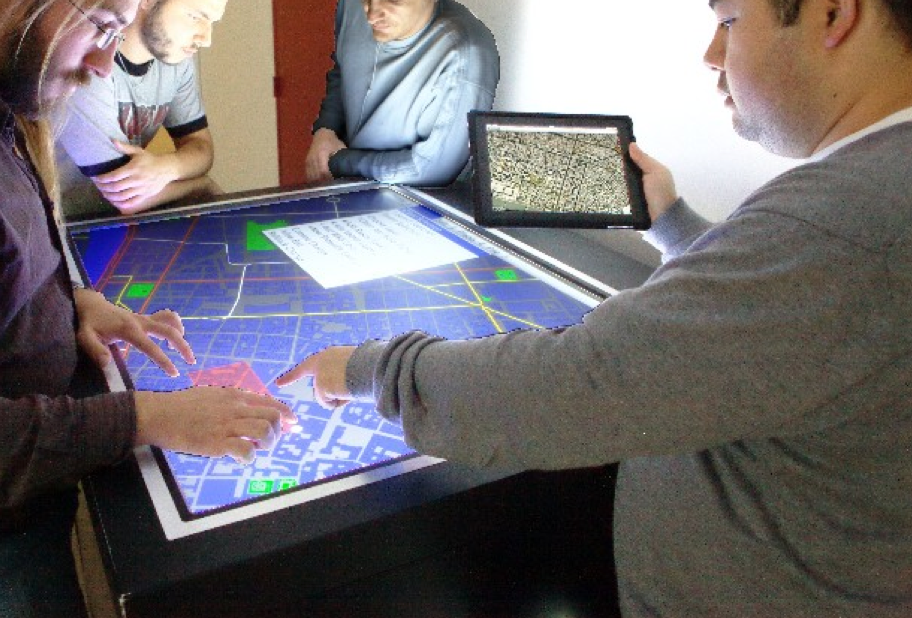 |
| Saving projects in QGIS-MT | 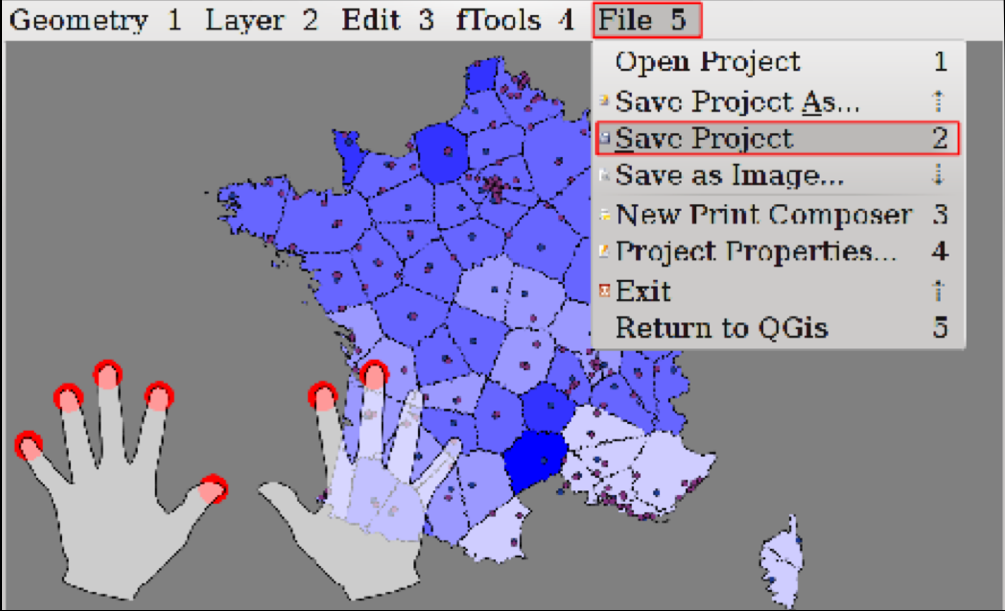 |
Comparing Free Hand Menu Techniques for Distant Displays using Linear, Marking and Finger-Count Menus (INTERACT 11)
Distant displays such as interactive Public Displays (IPD) or Interactive Television (ITV) require new interaction techniques as traditional input devices may be limited or missing in these contexts. Free hand interaction, as sensed with computer vision techniques, presents a promising interaction technique. This paper presents the adaptation of three menu techniques for free hand interaction: Linear menu, Marking menu and Finger-Count menu.
The first study based on a Wizard-of-OZ protocol focuses on Finger-Counting postures in front of interactive television and public displays. It reveals that participants do choose the most efficient gestures neither before nor after the experiment. Results are used to develop a Finger-Count recognizer. The second experiment shows that all techniques achieve satisfactory accuracy. It also shows that Finger-Count requires more mental demand than other techniques.
The first study based on a Wizard-of-OZ protocol focuses on Finger-Counting postures in front of interactive television and public displays. It reveals that participants do choose the most efficient gestures neither before nor after the experiment. Results are used to develop a Finger-Count recognizer. The second experiment shows that all techniques achieve satisfactory accuracy. It also shows that Finger-Count requires more mental demand than other techniques.
| Touch-Less Finger-Count for Distant Displays |  |
| Application on interactive television |  |
Code
QGIS-MT: Plugin for Quantum GIS (C++ / QT)References
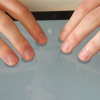 |
Gilles Bailly, Joerg Mueller, Eric Lecolinet Design and Evaluation of Finger-Count Interaction: Combining Multitouch gestures and Menus Journal of Human Computer Studies, 25 pages. Available on demand. |
 |
Gilles Bailly, Eric Lecolinet and Yves Guiard Finger-Count and Radial-Stroke Shortcuts: Two Techniques for Augmenting Linear Menus ACM CHI'10, p. 591-594 |
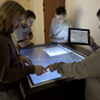 |
Alexandre Viard, Gilles Bailly, Eric Lecolinet and Emmanuel Fritsch Augmenting Quantum-GIS For Collaborative And Interactive Tabletops 25th International Cartographic Conference |
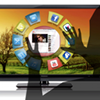 |
Gilles Bailly, Robert Walter, Joerg Muller, Tongyan Ning and Eric Lecolinet Comparing Free Hand Menu Techniques for Distant Displays using Linear, Marking and Finger-Count Menus. IFIP INTERACT'11, pages XX. |
Related Projects
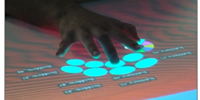 MTM (Multi-Touch Menu) |